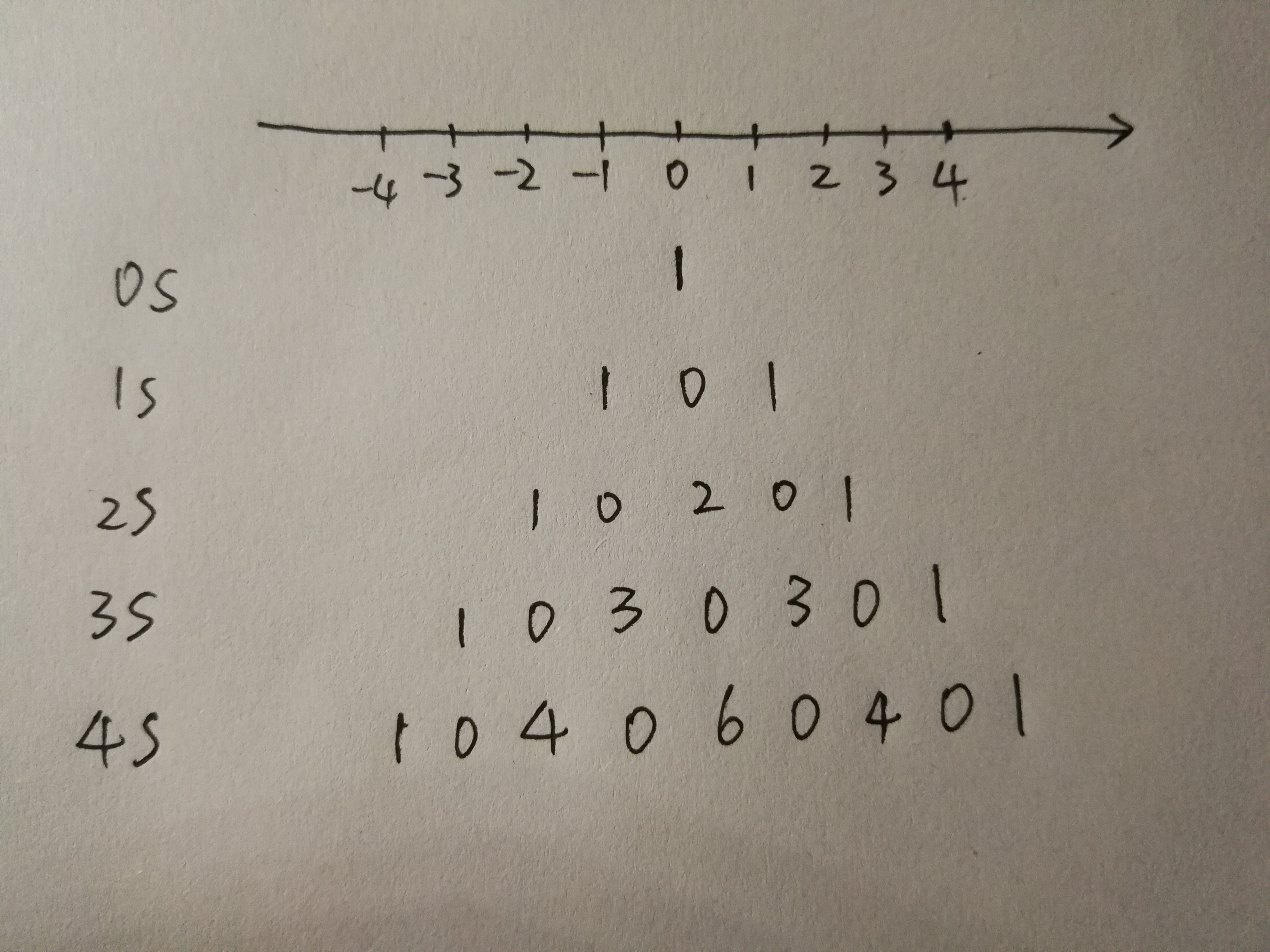Problem Description
Hmz likes to play fireworks, especially when they are put regularly.
Now he puts some fireworks in a line. This time he put a trigger on each firework. With that trigger, each firework will explode and split into two parts per second, which means if a firework is currently in position x, then in next second one part will be in position x−1 and one in x+1. They can continue spliting without limits, as Hmz likes.
Now there are n fireworks on the number axis. Hmz wants to know after T seconds, how many fireworks are there in position w?

Input
Input contains multiple test cases.
For each test case:
- The first line contains 3 integers n,T,w(n,T,|w|≤10^5)
- In next n lines, each line contains two integers xi and ci, indicating there are ci fireworks in position xi at the beginning(ci,|xi|≤10^5).
Output
For each test case, you should output the answer MOD 1000000007.
Sample Input
1 2 0 2 2 2 2 2 0 3 1 2
Sample Output
2 3
思路:
 若0s时烟花在x=0处,则t=2,3,4...s时,各个位置处的烟花数量如图所示,发现它们构成一个杨辉三角。于是可以知道,t s时,在位置(0-t)+k*2(0<=k<=t)处的烟花数量为C(t,k),其他位置的烟花数量为0。所以给定烟花的初始位置x和经过的时间t,可以算出在位置w的烟花数量
若0s时烟花在x=0处,则t=2,3,4...s时,各个位置处的烟花数量如图所示,发现它们构成一个杨辉三角。于是可以知道,t s时,在位置(0-t)+k*2(0<=k<=t)处的烟花数量为C(t,k),其他位置的烟花数量为0。所以给定烟花的初始位置x和经过的时间t,可以算出在位置w的烟花数量
AC代码:
#include <iostream> #include<cstdio> #define ll long long #define mod 1000000007 using namespace std; ll f[100010]; void init(){//预处理n! f[0]=1; for(ll i=1;i<=100005;i++){ f[i]=i*f[i-1]%mod; } } ll qpow(ll x,ll n){ ll ret=1; while(n){ if(n&1) ret=(ret*x)%mod; x=(x*x)%mod; n>>=1; } return ret; } ll rev(ll x){ return qpow(x,mod-2); } ll C(ll n,ll m){//利用逆元求组合数 return f[n]%mod*rev(f[m])%mod*rev(f[n-m])%mod; } int main() { init(); ll n,t,w; while(scanf("%lld%lld%lld",&n,&t,&w)!=EOF){ ll ans=0; for(ll i=1;i<=n;i++){ ll x,c; scanf("%lld%lld",&x,&c); ll stax=x-t; if((w-stax)%2!=0) continue; else{ ll k=(w-stax)/2; if(k<0||k>t) continue; else ans=(ans+(c*C(t,k))%mod)%mod; } } printf("%lld ",ans); } return 0; }